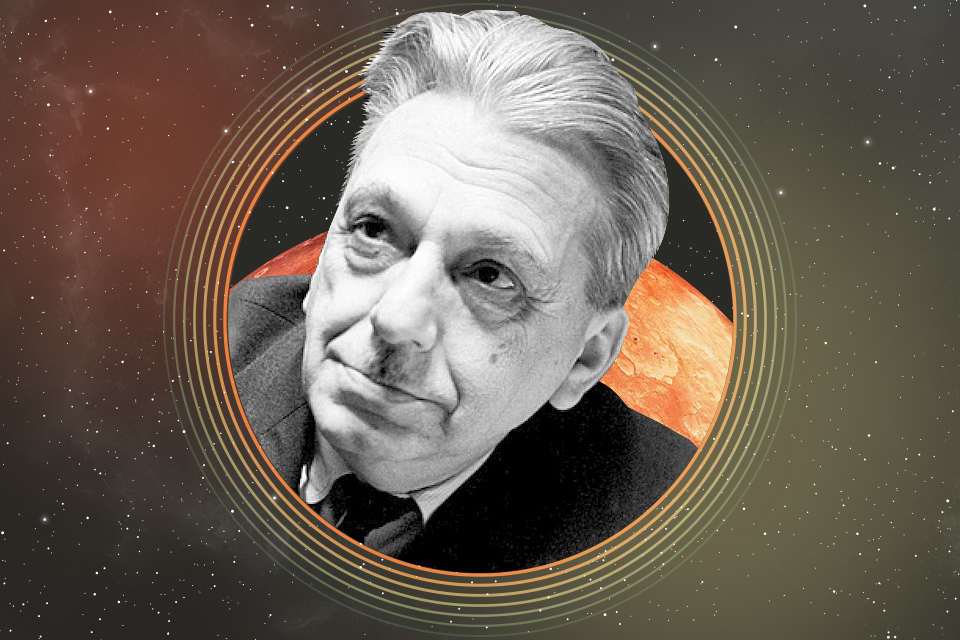Exactly 130 years ago, on March 30, 1894, the outstanding Ukrainian astronomer Mykola Barabashov was born in Kharkiv. For many years, he explored the Moon, Mars, and other planets of the solar system, and was the initiator of the creation of the Kharkiv Planetarium.

1. Who is Mykola Barabashov?
Mykola Barabashov is a Ukrainian scientist who was born and lived most of his life in Kharkiv. The son of a medical teacher, he became interested in astronomy early and published educational articles about the starry sky at school age.
Subsequently, despite the World War and the Russian-Ukrainian war, he managed to become a professional astronomer and make several important discoveries. Barabashov became the head of the Kharkiv Observatory, and then the Astronomical Department of Kharkiv University. During the Second World War, he even had to serve as the rector of this educational institution, but later he was forced to leave this position.
2. How did Barabashov find out what the surface of the moon looks like?
Mykola Barabashov carried out his first important scientific research when he was still a student at Kharkiv University. He decided to find out how much light our planet reflected into space. The phenomenon known as the “Da Vinci glow” helped him solve this problem.
It consists in that when the Moon has the appearance of a thin haze, the rest of it is visible in the form of a “ghost”. Scientists already knew that the light reflecting off our planet was responsible for this. Therefore, Barabashov carefully measured the brightness of this glow and was able to correctly assess how bright our planet was when viewed from space.
This study had an important follow-up. At the beginning of the 20th century, scientists continued to argue about what the surface of our moon was. And it was Barabashov who was the first in the world to establish that although it consisted of porous rocks, it was dense enough for a person to stand on it.
3. What interesting things did Barabashov learn about Mars?
In the 1930s, Barabashov and his students began studying Mars. Only 25 years before, humanity still considered the canals on this planet to be a reality, and at the time of Barabashov there were doubts that this planet was completely devoid of life. The scientist used a method known as photometry to study it. He had been observing for a long time how the reflection of light from different parts of the planet changed.
Photometry allowed Barabashov to make two important discoveries. First, observations of the polar caps showed that they were two-component. They partly consist of water ice, which remains in its place permanently, and partly of frozen carbon dioxide, which evaporates during this period.
Secondly, the Kharkiv astronomer managed to see a seasonal change in the brightness of dark areas on Mars. And he suggested that extremely powerful dust storms could be behind it. Both assumptions were subsequently confirmed.
4. What did Barabashov do for the development of astronomy in Kharkiv?
Barabashov was engaged not only in celestial, but also quite earthly affairs. In particular, all his life he was engaged in the popularization of science. For all comers, he talked in clear language about what was happening in the sky. And in 1957, it was thanks to Barabashov’s efforts that a planetarium was opened in Kharkiv.
Barabashov also acted as an organizer of Kharkiv Science. In the 1960s, he managed to organize the construction of the Chuguev Observation Station. It is located near the highway connecting Kharkiv with Izium. The AZT-8 telescope with a mirror diameter of 70 cm and a chromospheric-photospheric telescope were installed there. Over time, other devices appeared. Unfortunately, in 2022, the observatory was under Russian occupation for several months and was severely damaged.
5. Why was the market named after Barabashov?
Unfortunately for most of the population of Ukraine, the surname Barabashov is still associated with a huge clothing market in Kharkiv. Some even believe that this is some kind of area that has been called “Barabashovo” since ancient times. So, it can be assumed that the surname of the scientist comes from it.
But in fact, everything is exactly the opposite. The name of one of the metro stations was named in honor of Mykola Barabashov, and it already gave the name to the market that appeared next to it.
Follow us on Twitter to get the most interesting space news in time
https://twitter.com/ust_magazine


